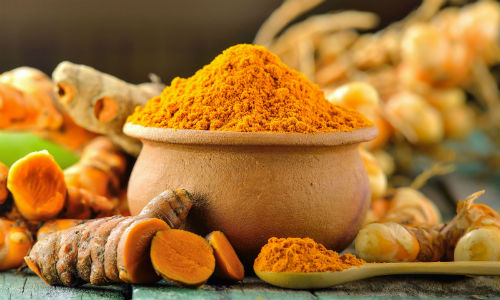
Turmeric has been used for centuries in both traditional medicine and skincare due to its potent anti-inflammatory and antioxidant properties. These benefits come from its main active compound, curcumin, which can help address several skin concerns, including acne, hyperpigmentation, and signs of aging. However, there are important considerations for safe and effective use.
Benefits of turmeric for the skin
- Fights acne: The antibacterial and anti-inflammatory properties of curcumin can help combat P. acnes, the bacteria that contributes to breakouts. Turmeric also helps calm the redness and swelling of irritated skin.
- Reduces hyperpigmentation: Turmeric can help even out skin tone and fade dark spots, like acne scars and sunspots, by inhibiting the production of melanin.
- Protects against aging: As a powerful antioxidant, turmeric helps neutralize free radicals that cause oxidative stress and premature aging. It can help maintain collagen levels and improve skin elasticity, reducing the appearance of fine lines and wrinkles.
- Promotes natural glow: By improving blood flow and cell regeneration, turmeric can give the skin a natural, healthy radiance.
- Soothes dry skin: For dry and irritated skin, turmeric can boost hydration and provide soothing anti-inflammatory effects.
How to use turmeric for your skin
The most common way to use turmeric topically is in a face mask. Always remember to do a patch test on your arm before applying it to your face to check for any allergic reaction.
- For acne: Mix 1 teaspoon of turmeric powder with 1 tablespoon of raw honey. Honey provides additional antibacterial properties and moisture to help heal and calm skin.
- For glowing skin: Combine 1 teaspoon of turmeric powder with 2 tablespoons of plain yogurt (which contains exfoliating lactic acid) and a few drops of honey.
- For oily skin: Mix turmeric with chickpea flour and rose water. This combination helps control oil production without over-drying.
- For hyperpigmentation: To help brighten dark spots, mix 1 teaspoon of turmeric with 1 tablespoon of aloe vera gel and a few drops of lemon juice.
What to avoid and consider
- Skin staining: The bright yellow pigment in turmeric, curcumin, can temporarily stain the skin, especially if you are fair-skinned. To minimize staining, use a small amount of powder, mix it with a stain-fighting ingredient like milk or yogurt, and limit application time to 10–15 minutes. Using Kasturi turmeric, a non-edible variety, can also help.
- Allergic reactions: Turmeric can cause contact dermatitis, which appears as a red, itchy rash. If you have sensitive skin, use a smaller amount or avoid it altogether.
- Excessive use: Using turmeric too often can strip the skin of its natural oils, leading to dryness and potential breakouts.
- Sun sensitivity: Turmeric can increase the skin’s sensitivity to the sun. When using topical turmeric, be diligent about applying broad-spectrum sunscreen with an SPF of 30 or higher.
- Irritating ingredients: Be cautious when mixing turmeric with other potent ingredients like lemon juice, especially if you have sensitive or dry skin. The high acidity can be irritating.
- Leaving on overnight: Never leave a turmeric mask on overnight, as this increases the risk of both severe staining and irritation.
- Medical conditions: If you have skin conditions like rosacea or eczema, or if you are pregnant, consult a dermatologist before using turmeric topically.